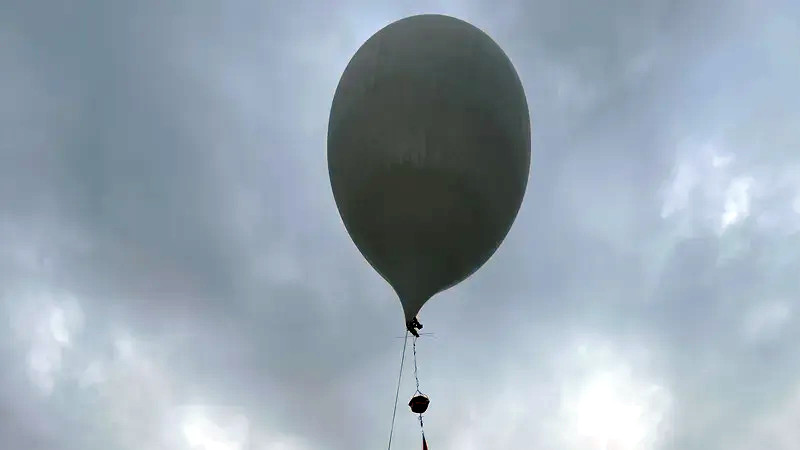The Great American Eclipse was a solar eclipse that passed nearly the entire continental United States back in 2017. While it might sound like a once-in-a-lifetime event to experience a total solar eclipse, the stars have aligned to bring another total solar eclipse to North America although with a slightly different path stretching from the west coast of Mexico and ending off the cost of Newfoundland in Canada. Plenty of people near the path of totality have already made plans to view the event, but [Stephen] and a team of volunteers have done a little bit of extra preparation and plan to launch a high-altitude balloon during the event.
The unmanned balloon will primarily be carrying a solar telescope with the required systems onboard to stream its images live during its flight. The balloon will make its way to the stratosphere, hopefully above any clouds that are common in New Brunswick during the early spring, flying up to 30,000 meters before returning its payload safely to Earth. The telescope will return magnified images of the solar eclipse live to viewers on the ground and has been in development for over two years at this point. The team believes it to be the first time a non-governmental organization has imaged an eclipse by balloon.
For those who have never experienced a total solar eclipse before, it’s definitely something worth traveling for if you’re not already in its path. For this one, Canadians will need to find themselves in the Maritimes or Newfoundland or head south to the eastern half of the United States with the Americans, while anyone in Mexico needs to be in the central part of the mainland. Eclipses happen in places other than North America too, and are generally rare enough that you’ll hear about a total eclipse well in advance. There’s more to eclipses than watching the moon’s shadow pass by, though. NASA expects changes in the ionosphere and is asking ham radio operators for help for the 2024 eclipse.
















Having just been watching Monty Python on airships, I have to channel their version of Count Zeppelin and say:
IT IS NOT A BALLOON! IT IS AN AIRSHIP!
And out the door they go
Interesting idea! “in the event it is cloudy on eclipse day, the balloon will be well above the clouds and able to send images back”
Of course I’m not the only one wondering how they will keep the solar telescope pointed at the sun while dangling from (supported by?) a balloon?
Gimbals, the same way ships at sea keep instruments (compasses, very very BFGs) in a consistent position despite the waves.
The challenge is probably keeping it pointed away from the sun before and after totality, or else the sensor will be fried by the optics.
Tracking the sun from a balloon is much more difficult, you need to counteract the motion’s momenrum to stop with some sort of opposing force. Payloads are limite to 4 lbs.
I would bet that they are using a counter-rotating system that doesn’t rely upon the balloon and the payload tether remaining fixed. One motorized gimbal to point and another that gets spun up the opposite direction to keep the net torque on the tether near zero.
The larger (several ton payload, several million cubic meter balloon) high altitude missions have a somewhat easier time than these smaller balloons and payloads when it comes to pointing. The bigger balloon has more rotational inertia and viscosity in the air which makes it a more stable and massive “anchor” for the payload to pivot against.
A complication is that the large balloons are wide enough that there can be significant shear in the winds from one side to the other of the balloon, leading to a tendency for the whole system to rotate around the vertical axis. Any precision pointing system has to compensate for that in addition to any pointing requirements it would have in the static case (tracking the Sun or its edge, for example).
NASA and other agencies sponsor the launch of many scientific balloon campaigns for upper atmosphere, solar, and astrophysical studies each year from a variety of places (Continental US, Sweden, Antarctica) at scales from the crane-launched million cubic meter scale down to hand launched meter scale systems – check it out, it’s amazing!
In the U.S., you are not limited to 4 lbs.
As long as you don’t fly it to, from, or through restricted airspace, you can fly (with effectively no regulations or permits required) any payload up to 4 lbs., any payload up to 6 lbs as long as each side of the box is more than 6 inches squared, and you can string any number of compliant payloads together up to a combined weight of 12 lbs.
See: CFR Title 14, Chapter I, Subchapter F, Part 101, Subpart A – Applicability
At some point during a total solar eclipse (70’s?) “they” managed to route an SST Concorde along the path of totality to stretch out how long totality lasted. The thought alone of that math problem makes my brain hurt. Mad props to these amateurs for even attempting the problem.
The pointing system is based on the AgileEye (https://patents.google.com/patent/US5966991A/en?oq=5%2c966%2c991). The AgileEye uses a pair of Dynamixel XC-430 servos to point a mirror that directs the solar image towards the imaging system. An IMU senses current heading and commands the servos as required to compensate.
Feel free to ask if you want further details or photos.